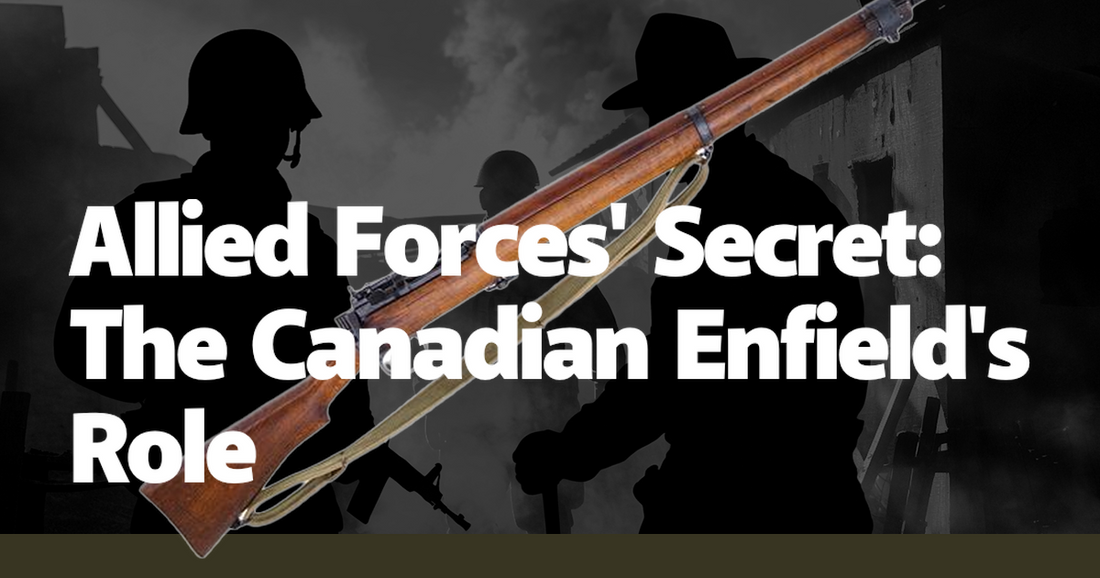In the annals of World War II, much has been written about the grand strategies and the monumental battles that shaped the course of history. However, less frequently discussed are the nuanced contributions of individual nations and their specialized units that played pivotal roles. Among these, the Canadian Enfield, a variant of the Lee-Enfield rifle, stands out as a symbol of precision, resilience, and ingenuity. The Canadian Enfield's role in the Allied Forces' success is a story of technological adaptation, expert marksmanship, and strategic deployment that merits closer examination.
The Lee-Enfield rifle, originally a British design, was already renowned for its accuracy and reliability. However, the Canadian variant brought unique modifications that made it particularly effective in the diverse and often harsh environments where Canadian troops were deployed. For instance, the Canadian Enfield featured improved sights and a more robust stock, designed to withstand the rigors of both European and Pacific theaters. This adaptability proved crucial in campaigns like the Italian Campaign, where Canadian forces faced a mix of rugged terrain and urban warfare. The rifle's reliability in such varied conditions earned it a reputation among soldiers as a trustworthy companion in battle.
One of the most compelling examples of the Canadian Enfield's impact can be found in the Battle of Ortona, often referred to as "Little Stalingrad." Here, Canadian troops faced fierce resistance from entrenched German forces in a brutal urban combat scenario. The Canadian Enfield's precision allowed snipers to neutralize enemy positions with remarkable efficiency, providing much-needed relief to advancing infantry units. Anecdotes from veterans recount how the rifle's accuracy turned the tide in several critical engagements, enabling Canadian forces to capture and hold key positions within the city.
The effectiveness of the Canadian Enfield was not solely due to its mechanical superiority; it was also a testament to the rigorous training and exceptional marksmanship of Canadian soldiers. The Canadian military placed a strong emphasis on shooting proficiency, with extensive training programs designed to maximize the potential of the Enfield rifle. This focus on marksmanship paid dividends on the battlefield, where Canadian snipers and infantrymen consistently outperformed their adversaries. Stories from the front lines often highlight the uncanny ability of Canadian soldiers to make seemingly impossible shots, a skill honed through countless hours of practice with their Enfields.
In addition to its battlefield prowess, the Canadian Enfield played a crucial role in the broader strategic objectives of the Allied Forces. The rifle's reliability and accuracy made it an ideal tool for reconnaissance missions and special operations, where stealth and precision were paramount. Canadian units equipped with Enfields were frequently tasked with gathering intelligence and conducting sabotage operations behind enemy lines. These missions, though less heralded than major battles, were instrumental in disrupting enemy supply lines and communication networks, thereby weakening the overall war effort of the Axis powers.
The legacy of the Canadian Enfield extends beyond its immediate impact on the battlefield. The rifle became a symbol of Canadian ingenuity and resilience, embodying the spirit of a nation determined to contribute significantly to the Allied cause. Veterans who wielded the Enfield often spoke of it with a sense of pride and reverence, viewing it as a key factor in their survival and success. This deep-seated respect for the rifle is reflected in numerous memoirs and historical accounts, where the Canadian Enfield is frequently cited as a critical element of the Canadian war effort.
Moreover, the Canadian Enfield's influence persisted long after the war ended. Many of the lessons learned from its deployment and the marksmanship training programs influenced post-war military strategies and equipment development. The rifle itself continued to see service in various conflicts and peacekeeping missions, a testament to its enduring reliability and effectiveness. Collectors and historians today regard the Canadian Enfield as a prized artifact, a tangible link to the bravery and skill of the soldiers who wielded it.
In conclusion, the Canadian Enfield's role in the Allied Forces' success during World War II is a multifaceted story of technological innovation, exceptional training, and strategic deployment. This remarkable rifle not only provided Canadian troops with a reliable and accurate weapon but also became a symbol of their contribution to the war effort. Through its use in key battles and critical missions, the Canadian Enfield helped shape the course of history, leaving an indelible mark on the legacy of World War II. As we continue to study and honor the sacrifices of those who fought, the story of the Canadian Enfield serves as a poignant reminder of the vital role that specialized equipment and skilled soldiers play in the broader context of war.

